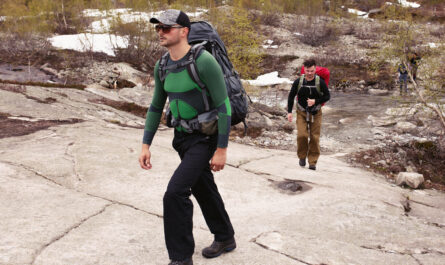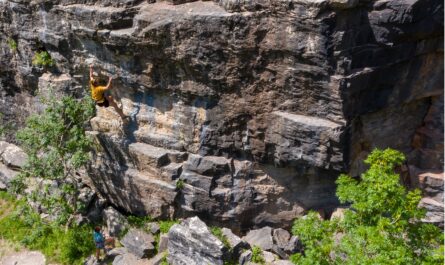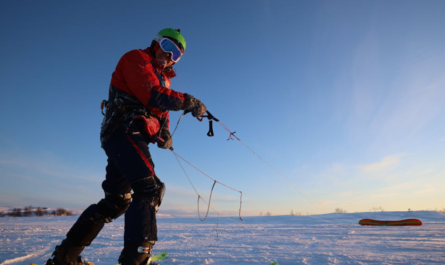The Upper Engadine around Saint Moritz is a high‑alpine amphitheater where sunlight scatters off cobalt lakes, larch forests glow gold in autumn, and the 4,000‑metre Bernina massif rises like a jagged crown of ice. Yet amid this grandeur, it’s the glaciers—ancient, slow‑moving rivers of compressed snow—that mesmerize most. Flowing tongues such as Vadret da Morteratsch, Vadret Pers, and Vadret Roseg have sculpted sweeping U‑shaped valleys, polished granite slabs, and kettle‑pocked meadows for millennia. Today, an intricate web of Swiss‑grade trails, mountain huts, and cable cars makes these frozen giants remarkably accessible—whether you crave a stroller‑friendly moraine stroll or a roped traverse across crevasse‑laced ice.
The Engadine Valley around Saint Moritz isn’t just a playground of sparkling lakes and postcard ski resorts—it’s home to some of Europe’s most accessible, awe‑inspiring glaciers. These rivers of ancient ice have sculpted granite walls, carved deep U‑shaped valleys, and nurtured delicate alpine ecosystems for millennia. Today, a lattice of impeccably maintained Swiss trails, mountain huts, and cable cars lets hikers, families, and seasoned alpinists experience that frozen grandeur up close.
Below you’ll find eleven glacier‑centric hikes, ordered from easiest to most technical, followed by expanded sections on gear, safety, geology, cultural lore, and practical logistics. This single guide equips you to plan an unforgettable glacier adventure while treading lightly on a landscape that is both fragile and awe‑inspiring.
1. Morteratsch Glacier Nature Trail
- Distance / Time: 4 km round‑trip · 60–90 min
- Grade: Easy (T1–T2)
- Access: Morteratsch railway stop (10 min from St. Moritz)
- Family‑Friendly: Yes; stroller‑friendly for first 1.5 km
A wide gravel avenue follows the ice‑blue Ova da Morteratsch stream to the retreating snout of one of the Alps’ best‑studied glaciers. Twenty date posts mark where the ice once lay, a sobering timeline that makes climate change tangible. Interpretive boards explain seracs, moraines, and meltwater hydrology in four languages. Binoculars reveal climbers practicing ice‑axe arrests on the serac flanks.
2. Cavaglia Glacier Garden Loop
- Distance / Time: 2 km loop · 45 min–1 hr
- Grade: Easy (T1)
- Access: Cavaglia station, one Bernina line stop south of Morteratsch
This compact detour unveils “giant’s kettles”—perfect granite cylinders drilled by whirlpools of glacial meltwater 12,000 years ago. Metal walkways and QR‑coded panels narrate the erosive power of subglacial rivers. Picnic tables beneath stone pines invite a scenic snack stop.
3. Morteratsch Glacier “Time‑Machine” Circuit (NEW)
- Distance / Time: 7 km lollipop loop · 2–2½ hr
- Grade: Easy‑Moderate (T2)
Branching off the main Morteratsch path, this add‑on climbs the left lateral moraine, giving a bird’s‑eye view of the glacier’s crevasse labyrinth. A short ladder section (with handrails) deposits you beside a turquoise pro‑glacial pond where icebergs occasionally calve. Ideal for photographers seeking elevated angles.
4. Pontresina to Chamanna Tschierva Viewpoint
- Distance / Time: 12 km out‑and‑back · 4 hr
- Grade: Moderate (T2)
Val Roseg’s larch forests transition to rocky meadows where ibex graze. A final moraine ridge rewards hikers with a front‑row seat to the toothy seracs of Vadret da Tschierva—one of the Bernina massif’s steepest glaciers. Optional 15‑minute spur to the hut for strudel and glacier tea.
5. Val Roseg & Roseg Glacier Front
- Distance / Time: 16 km round‑trip · 6–7 hr
- Grade: Moderate–Strenuous (T2–T3)
Follow horse‑carriage lanes or hiking tracks past Roseg waterfalls and marmot meadows. The trail narrows onto moraine gravel, ending at a jade lagoon where transparent slabs of ice float like glass sculptures. Early morning hikers may hear distant “pistol cracks” as seracs shed overnight frost.
6. Chamanna Boval & Pers–Morteratsch Confluence
- Distance / Time: 10 km round‑trip · 4–5 hr
- Grade: Moderate (T2–T3)
Steep zigzags through dwarf pine lead to the hut’s stone terrace—arguably Engadine’s headiest view: two glaciers merging into a single 2‑km‑wide ice highway beneath Piz Palü. Stay overnight for a sunset turning the ice rose‑gold and a dawn alpenglow that blazes electric blue.
7. Diavolezza Ridge Circuit & Pers Glacier Panorama
- Distance / Time: 5 km loop · 2–3 hr
- Grade: Easy‑Moderate (T2)
- Access: Diavolezza cable‑car summit (2,978 m)
A cairned path undulates over barren quartzite knolls, passing snowmelt tarns that mirror the sky. The mid‑loop viewpoint drops 500 m vertically to the Pers Glacier’s sweeping S‑curve—its surface streaked by dark medial moraines like zebra stripes of rock dust.
8. Fuorcla Surlej Balcony & Lej da Vadret Spur
- Distance / Time: 14 km round‑trip · 5–6 hr
- Grade: Moderate (T2–T3)
From Corvatsch Murtèl station, contour beneath orange gneiss crags to Fuorcla Surlej (2,755 m)—a natural balcony famed for postcards. Many hikers picnic here, but continuing 250 m down talus reaches Lej da Vadret, a pro‑glacial lake whose mirror‑still surface reflects Piz Bernina’s snow pyramid. Return via the same track or loop to Alp Surlej.
9. Sella–Boval High Traverse
- Distance / Time: 13 km point‑to‑point · 6–7 hr
- Grade: Strenuous (T4)
From Diavolezza summit, a wilder path drops to Fuorcla Sella (2,846 m), then traverses red rhyolite scree above the Pers Glacier. Fixed cables guard one exposed corner. After coffee at Chamanna Boval, descend to Morteratsch station. Sure‑footedness and dry weather essential.
10. Piz Cambrena Glacier Traverse
- Distance / Time: 12 km · 8–10 hr
- Grade: Technical (T4–T5) · guide recommended
Roped parties descend Diavolezza glacier ramp, weave through crevasses marked by wands, and climb 35° snow to Cambrena’s 3,603‑m summit. Views reach Lake Como on a crystal‑clear day. Beginner crampon users can book IFMGA guides from Pontresina.
11. Piz Roseg & Sella Ridge Expedition
- Distance / Time: 18–20 km over two days
- Grade: Very Strenuous (T5–T6, PD+)
Day 1: Hike to Chamanna Tschierva for acclimatization. Day 2: 3 a.m. start across the Tschierva Glacier, steep 45° ice ramps to Fuorcla Prievlusa, and an airy mixed ridge to Piz Roseg (3,937 m). Only for climbers skilled in front‑point cramponing and short‑rope techniques.
Gear Checklist for Glacier Country
| Category | Essentials | Notes |
|---|---|---|
| Footwear | Waterproof boots (min. B1 flex) | Trail shoes fine for T1–T2 crystal paths; boots for moraines |
| Clothing | Layering: merino/synth base; fleece; waterproof shell | Temps can swing from 25 °C valley to –5 °C on ridges |
| Sun Protection | Cat‑3/4 sunglasses, SPF50 cream, brim hat | UV intensity at 3,000 m can burn in <20 min |
| Navigation | SwissTopo map, GPX loaded watch/phone | Cell reception good but not guaranteed in cirques |
| Safety | Poles, headlamp, whistle, small first‑aid kit | Add microspikes in early June or late September |
| Glacier Kit* | Crampons, harness, 30‑m rope, prusiks, ice axe | *Required only for routes 10‑11 or any ice crossing |
Understanding Engadine Glacial Geology
Birth of a Glacier – Snowfall above the firn line compacts into névé, then firn, then blue ice over ~30 years. The Morteratsch névé zone sits around 3,100 m beneath Piz Bernina.
Flow Rates – Morteratsch’s surface ice moves roughly 30 m per year; Pers Glacier slides 40–45 m annually, driven by a steeper gradient.
Medial Moraine Stripes – Where separate ice streams merge, their side moraines braid into a dark central ribbon. These stripes act like conveyer belts, ferrying summit rocks to valley floors.
Climate Alarm – Since 1860, Morteratsch has retreated 2.2 km and lost ~40 % of its volume. Scientists project Engadine glaciers could vanish by 2100 if greenhouse emissions remain high.
Cultural Lore: Legends of Ice and Stone
- Maid of Morteratsch – Romansh folklore tells of a shepherdess who wept for her lost lover until her tears melted portions of the glacier. Locals claim you can hear her lament in summer meltwater streams.
- Roseg’s Singing Ice – Old dairymen believed nighttime groans of cracking seracs were glacier spirits singing warnings to reckless travellers.
- Shining Path – Fuorcla Surlej’s name stems from Romansh sur‑lej (“above the lake”), but locals joke it translates to “door of light” because the granite saddle glows copper at sunrise.
Logistics & Planning
Travel Passes – The Engadin Mobil Pass covers trains, buses, and select lifts: ideal for hut‑to‑hut explorers.
Hut Reservations – Book Chamanna Boval, Chamanna Tschierva, and Diavolezza Lodge at huts.ch; prepay CHF 30 deposit. Half‑board includes soup, main, dessert, and breakfast gruel—carb heaven for trekkers.
Weather Portals – MeteoSwiss (THUNDERSTORM radar), Windy (wind‑gust maps), SLF WhiteRisk (spring avalanche bulletins).
Guides & Courses – Bergsteigerschule Pontresina offers one‑day “Glacier Trek & Crevasse Rescue” packages (CHF 220 pp) and 2‑day Piz Roseg summits (CHF 690 pp incl. hut).
Responsible‑Tourism Etiquette
- Stick to Paths – Alpine turf is fragile; wandering onto lichen‑coated slabs leaves scars lasting decades.
- Silence in Moraine Zones – Wildlife (ptarmigan, snow hare) rely on stealth; loud music scares them.
- Leave No Trace – Even orange peels linger for a season at 2,800 m. Pack out all waste.
- Respect Research Equipment – Stakes and ablution panels on Morteratsch track glacier retreat—do not disturb.
- Support Local Culture – Try Romansh dishes (capuns, pizzocheri) in Pontresina; purchase cheese from alp farmers who maintain high‑pasture biodiversity.
Glossary of Glacier Terms
| Term | Definition |
|---|---|
| Firn Line | Altitude above which snow persists year‑round |
| Crevasse | Deep crack caused by differential glacier flow |
| Serac | Unstable tower of ice on steep slopes |
| Suncups | Bowl‑shaped melt patterns on summer snowfields |
| Bergschrund | Gap between moving glacier and stationary headwall rock |
Conclusion
Whether you’re photographing ice‑blue seracs from a stroller‑friendly trail or crampon‑front‑pointing up Piz Cambrena’s north ridge, the Saint Moritz region delivers glacier experiences that etch themselves into memory—and conscience. Each shimmering tongue of ice narrates Earth’s deep‑time story, yet also issues a fragile plea for stewardship as warming accelerates their retreat.
By preparing thoroughly, respecting mountain ethics, and embracing local culture, you not only safeguard yourself and the ecosystem but also ensure that future generations may still marvel at Engadine’s frozen giants. Pack your layers, lace your boots, and step onto the living history of ice—before the meltwater chorus becomes a silent echo.



